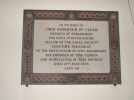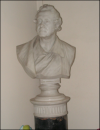Heartland
master brummie
In a 2014 post the following comment was made:
My current "project" is to unravel the story behind the railway bridge over Icknield Street facing the Great Western Inn and adjacent to the old station.
A drawing at Kew suggests it may have been one of seven bridges that Brunel had to repair/rebuild following the collapse of the bridge over the Winson Green Turnpike (aka Handsworth New Road) on 25th August 1854 which delayed the opening of the line up to Wolverhampton until the following November.
The collapse of this bridge happened the day after the Government Inspector made a tour of the line and tested this bridge.
The passage of a ballast train (according to one paper) a broad gauge train, led to the failure of a wrought iron beam that broke into two and lead to 5 waggons of the train falling onto the road below.
The bridge was said to be of the iron box, or tubular, type, which presumably was based on a design by Brunel. In view of the time scale August -November to expect replacement would be unlikely, but modification remains a possibility.
My current "project" is to unravel the story behind the railway bridge over Icknield Street facing the Great Western Inn and adjacent to the old station.
A drawing at Kew suggests it may have been one of seven bridges that Brunel had to repair/rebuild following the collapse of the bridge over the Winson Green Turnpike (aka Handsworth New Road) on 25th August 1854 which delayed the opening of the line up to Wolverhampton until the following November.
The collapse of this bridge happened the day after the Government Inspector made a tour of the line and tested this bridge.
The passage of a ballast train (according to one paper) a broad gauge train, led to the failure of a wrought iron beam that broke into two and lead to 5 waggons of the train falling onto the road below.
The bridge was said to be of the iron box, or tubular, type, which presumably was based on a design by Brunel. In view of the time scale August -November to expect replacement would be unlikely, but modification remains a possibility.


